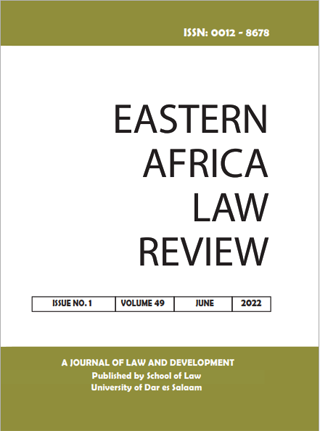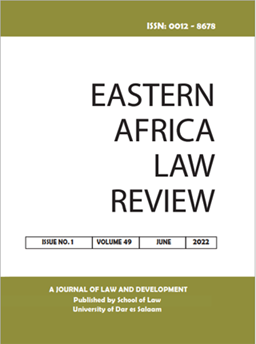Challenges in Harmonising Conservation Laws on Living Marine Resources within the Framework of the EAC: Case Study of Tanzania and Kenya
Abstract
Marine ecosystems compirese of transboundary resourceswhich occupy up to 71% of the earth ' s surface. Up to 90% of
the world ' s living marine resources exist within the Exclusive
Economic Zone (EEZ). The 1982 UN LOSC confers
management and conservation of the EEZ to the coastal
State ' s jurisdiction. It is, however, argued that since oceans are
transboundary, effective conservation of their living resources
requires coordinated approach between neighbouring coastal
States. Such approaches would help to avoid a situation where
living marine resources of the same ecosystem are possibly
conflicting conservation measures.
One way through which neighbouring Coastal States can
coordinate conservation measures for their living marine
resources is through the process of harmonisation of laws.
Harmonisation leads to establishment of common legal
structures and institutions to aid with the intended
coordination. It is therefore argued that, through
harmonisation, Kenya and Tanzania would enhance their
Downloads
Published
2022-10-09
Issue
Section
Articles



